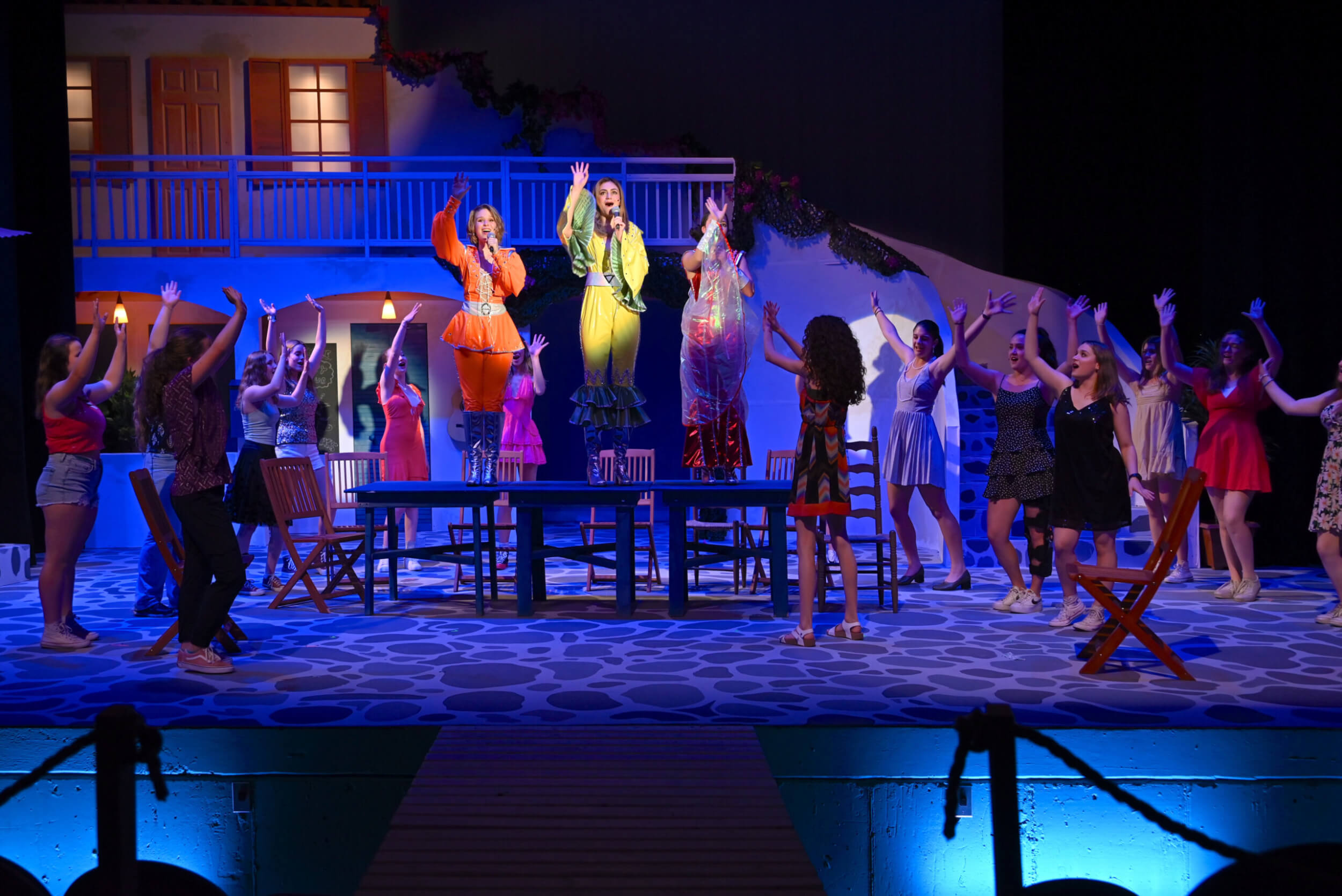Each spring, Colorado Academy’s Department of Theater and Dance invites aspiring performers to a festive “reveal” of the coming school year’s planned productions. Just before the 2022 edition, now-Senior Sofie Henry warned her friends half-jokingly, “If they tell us the musical next year is Mamma Mia!, I’m going to lose my mind. I hate that show so much.”
To be fair, the songs of the Swedish supergroup ABBA, the driving force for the wildly popular “jukebox” musical comedy that debuted on Broadway in 2001, have never appealed to everyone. While ABBA is one of the most successful and most beloved acts in the history of pop music, with record sales in the hundreds of millions and YouTube views in the billions, some critics and fellow musicians at the time derided their music as a “nagging annoyance.”
And sure enough, when the staccato opening piano notes of ABBA’s 1975 hit “Mamma Mia” started blasting over the sound system in the Leach Center for the Performing Arts, where students had gathered for the big reveal, Henry screamed.
But almost a year later, as the crowd-pleasing show brings the colors, sounds, and fashions of the disco era to the Leach Center’s mainstage, the talented Senior admits, “I love it now, and I’m having so much fun. Out of all the shows I’ve done here at CA, this has to be in my all-time hall of fame. How can you not love ABBA?”
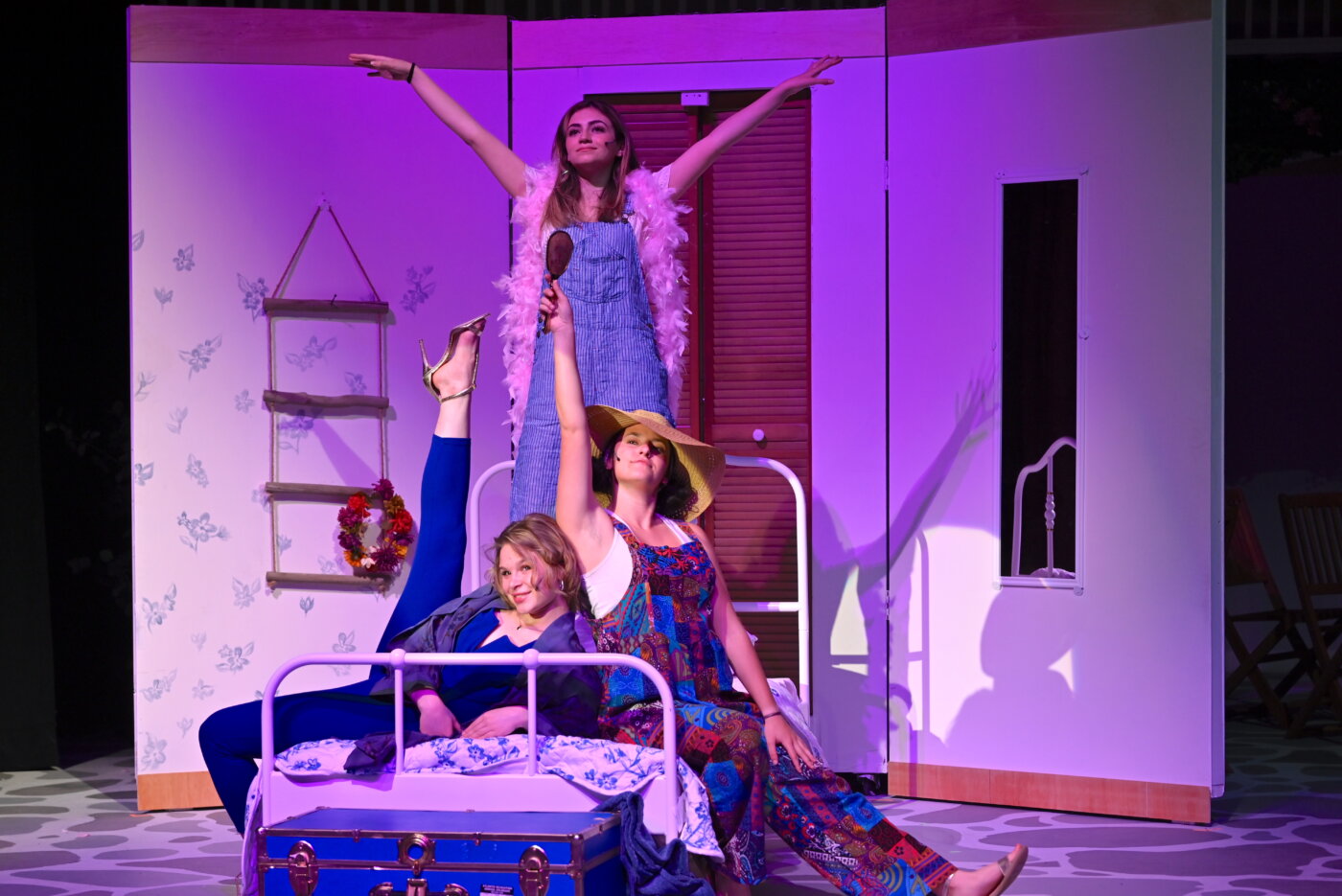
Indeed, the smile-inducing appeal of the legendary group’s instantly recognizable hits, from early singles “Waterloo” and “Honey Honey” to the global chart-topping “Dancing Queen” and “Take a Chance on Me,” is almost irresistible—even more so, according to the show’s director and choreographer, CA dance and theater instructor Melissa Zaremba, in a year when it finally seems that the COVID-19 pandemic is really and truly over.
“Mamma Mia! feels like a celebration,” she explains. “It’s life affirming; it’s all about the good in people. Since the pandemic, as a director I’m really drawn toward pieces that offer an escape. I love the idea that we can give people two hours where they can just enjoy the show and have fun. Sure, you’ll eventually go back to whatever life looks like outside the theater, but hopefully we’ll make you laugh, and you’ll leave with a song in your head.”
A message for today
If there was ever a musical that could put a song in your head—and keep it lodged there for days—it’s Mamma Mia! The show, which was the basis for the 2008 film adaptation starring Meryl Streep, centers around a wedding on a fictional Greek island, and incorporates a hit-filled playlist of 25 ABBA songs that drive the plot and give voice to the characters’ thoughts and feelings.
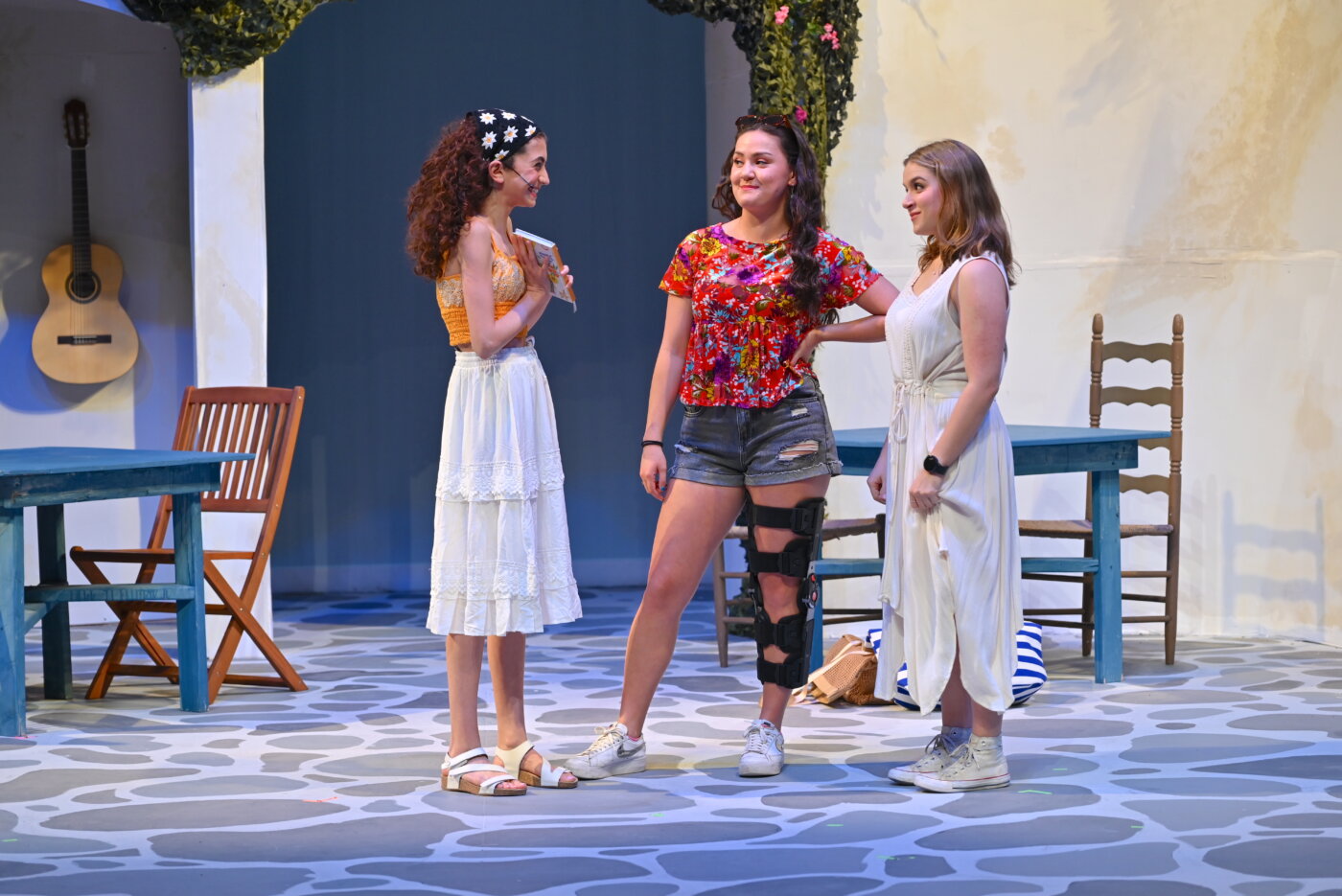
The bride-to-be, 20-year-old Sophie, is the daughter of the proprietor of an inn on the island, Donna. Sophie wants her father to walk her down the aisle, but she’s never known who he is, and Donna’s not sure herself. Discovering the names of three of her mother’s suitors in an old diary, Sophie surreptitiously invites all three of the potential father figures to her wedding, and complications inevitably arise when they arrive—neither Donna nor any of the men know the real reason they’ve been invited. As Sophie connects with each of her possible dads, and Donna reconnects with her past, the two discover the importance of love, friendship, and self-reliance.
The hilarious story has a lot going for it, says Zaremba.

“I am really interested in material with strong female characters,” she says. As a professional stage performer for over 20 years, Zaremba is all too familiar with the tropes that traditionally have limited women in musical theater. But the character of Donna—just like her sassy gal pals Tanya and Rosie, who come to the island for the wedding—is different.
“Donna’s been a single mom, raising her daughter on her own, and isn’t ashamed at all that she’s not really sure which one of these people might be her dad,” recounts Zaremba. “She runs the inn and does all the repairs herself. She has fun with her friends and is happy with the life she’s built on the island.”
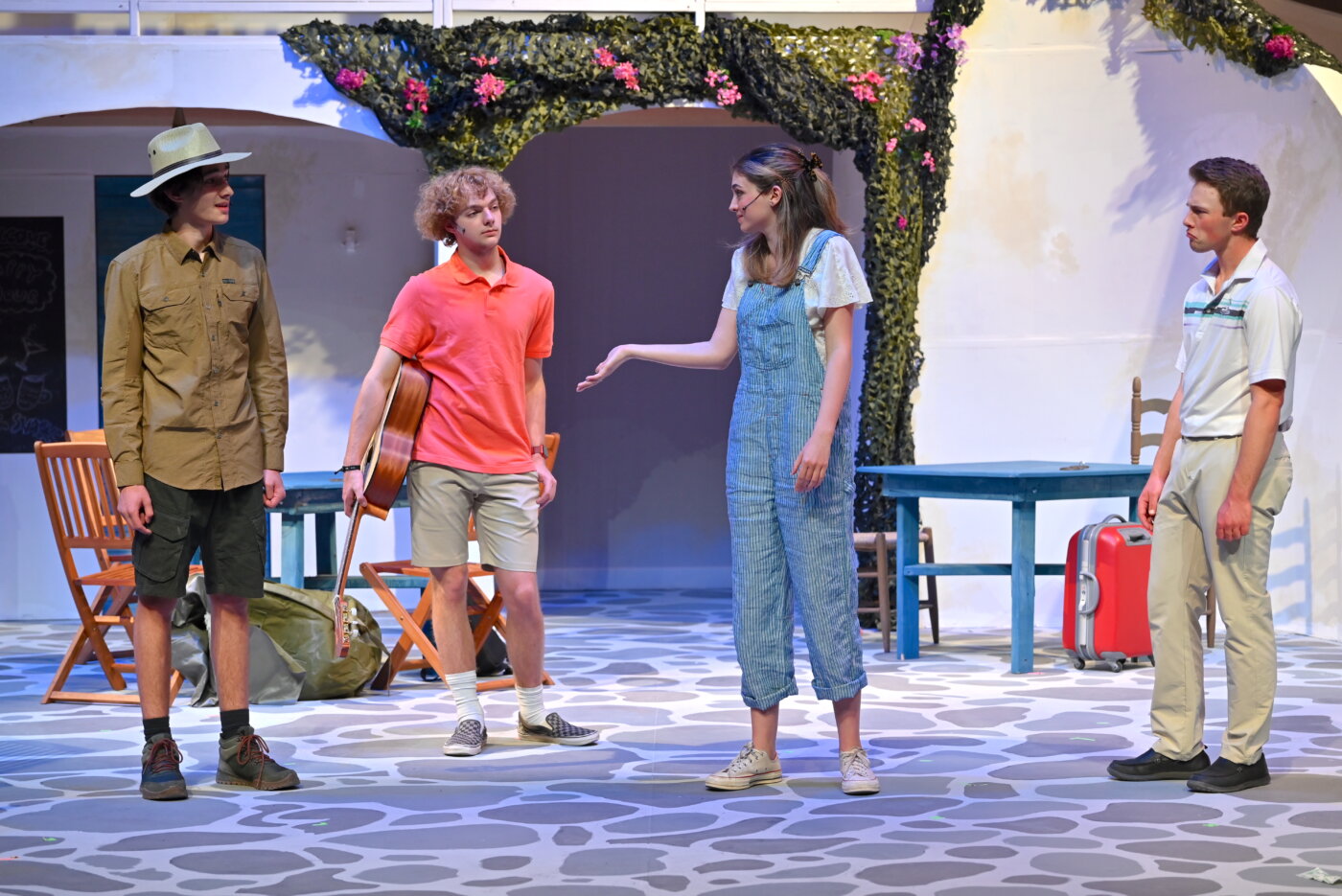
Sophie’s journey, too, comes with a valuable message. “At the start of the show, she’s searching for something she feels is missing in her life,” Zaremba explains. “But as she learns about herself through her encounters with her mother’s old flames, she realizes that the answer she’s looking for is within herself—not in some father figure or her impending marriage.”
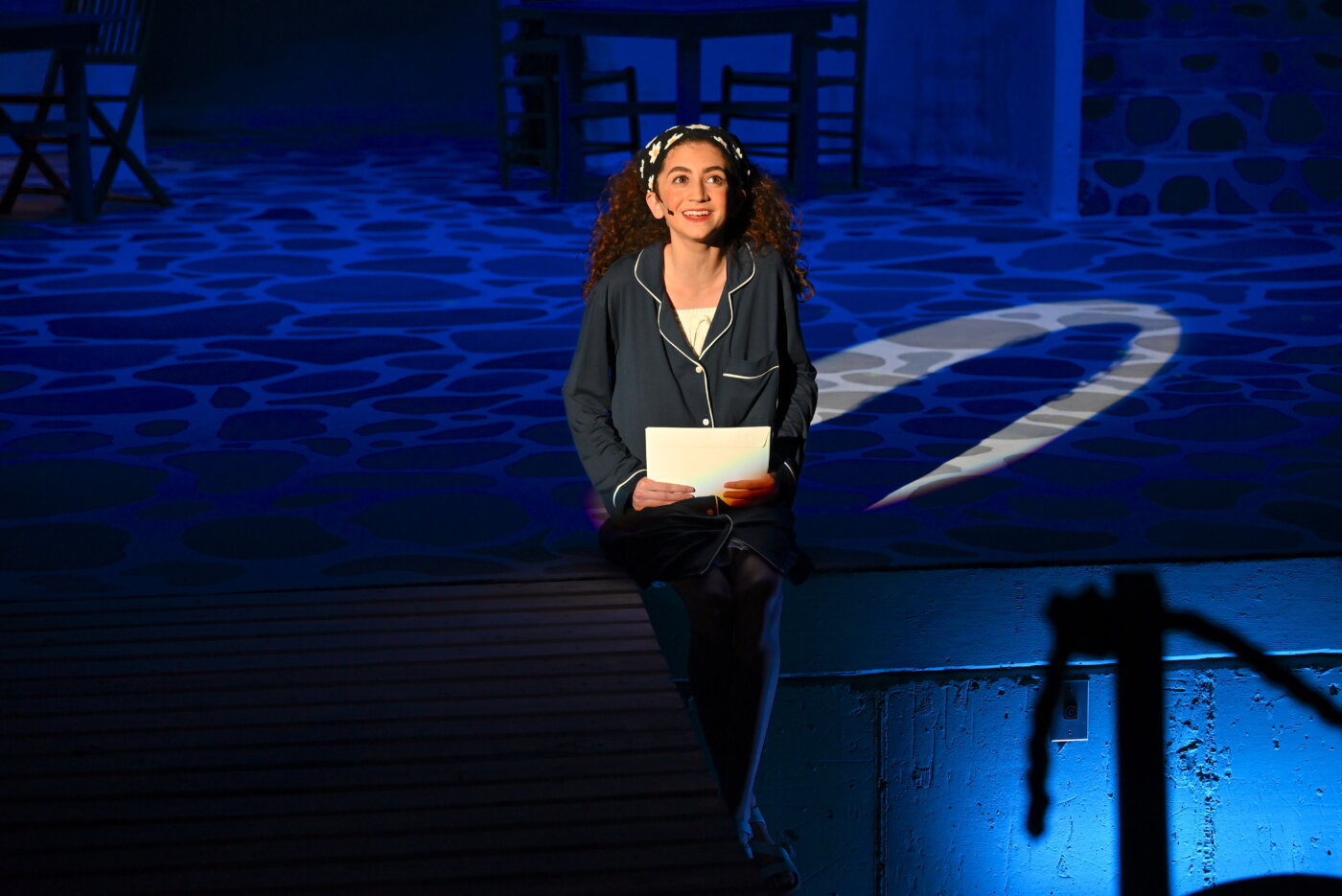
The idea of discovering one’s own strength and resilience—whether you’re a single mom or a young adult—clearly resonated with the Mamma Mia! cast, says Zaremba. At the same time, the musical celebrates the bonds of friendship and support that unite Donna, Sophie, the three dads, and the assorted wedding guests who bring together past and present.
These connections—deepened through emotion-laden songs and sparkling staging—are in some ways at the heart of the musical, Zaremba observes, and speak to the enduring appeal of the art form itself.
A special group of performers
Mamma Mia!’s positive outlook and driving music are the perfect match for this year’s corps of Upper School performers, says Zaremba.
“Since the first day of auditions, whenever this particular group of students has come together, it’s always felt like a party. They love being with each other; there’s this vibrant energy. Not every cast has that bond, and seeing that kind of special magic that makes everything gel has been incredibly cool.”
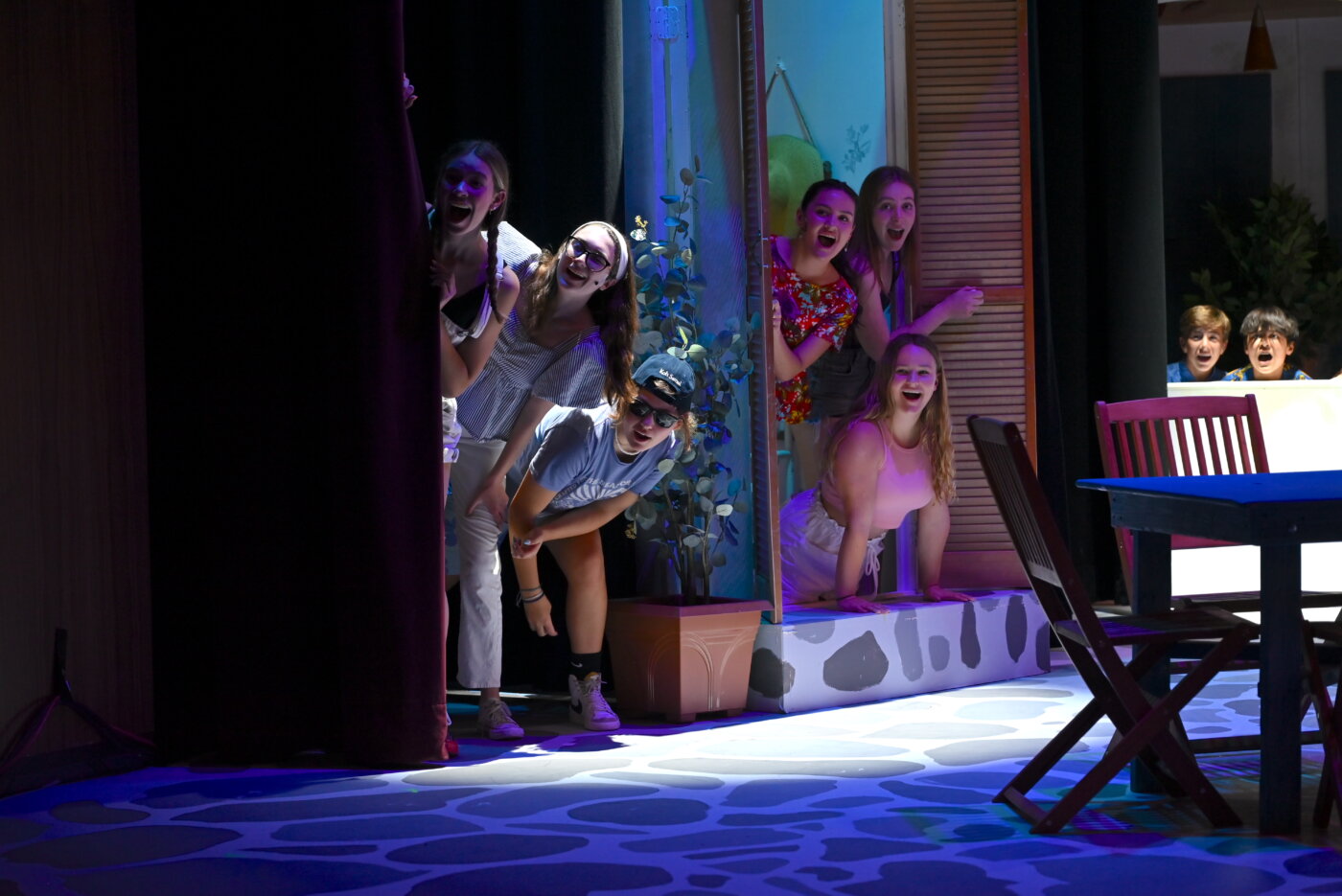
Of course, at the center of the musical is the bond between mother and daughter. And in this production, that bond is truly something special. Senior Avery Goldstein, a veteran of CA’s theater program, plays the role of Donna, and her younger sister, Ninth Grader Rory, plays her daughter, Sophie. The casting of the two talented Goldsteins opposite each other gives CA’s Mamma Mia! a unique sparkle.
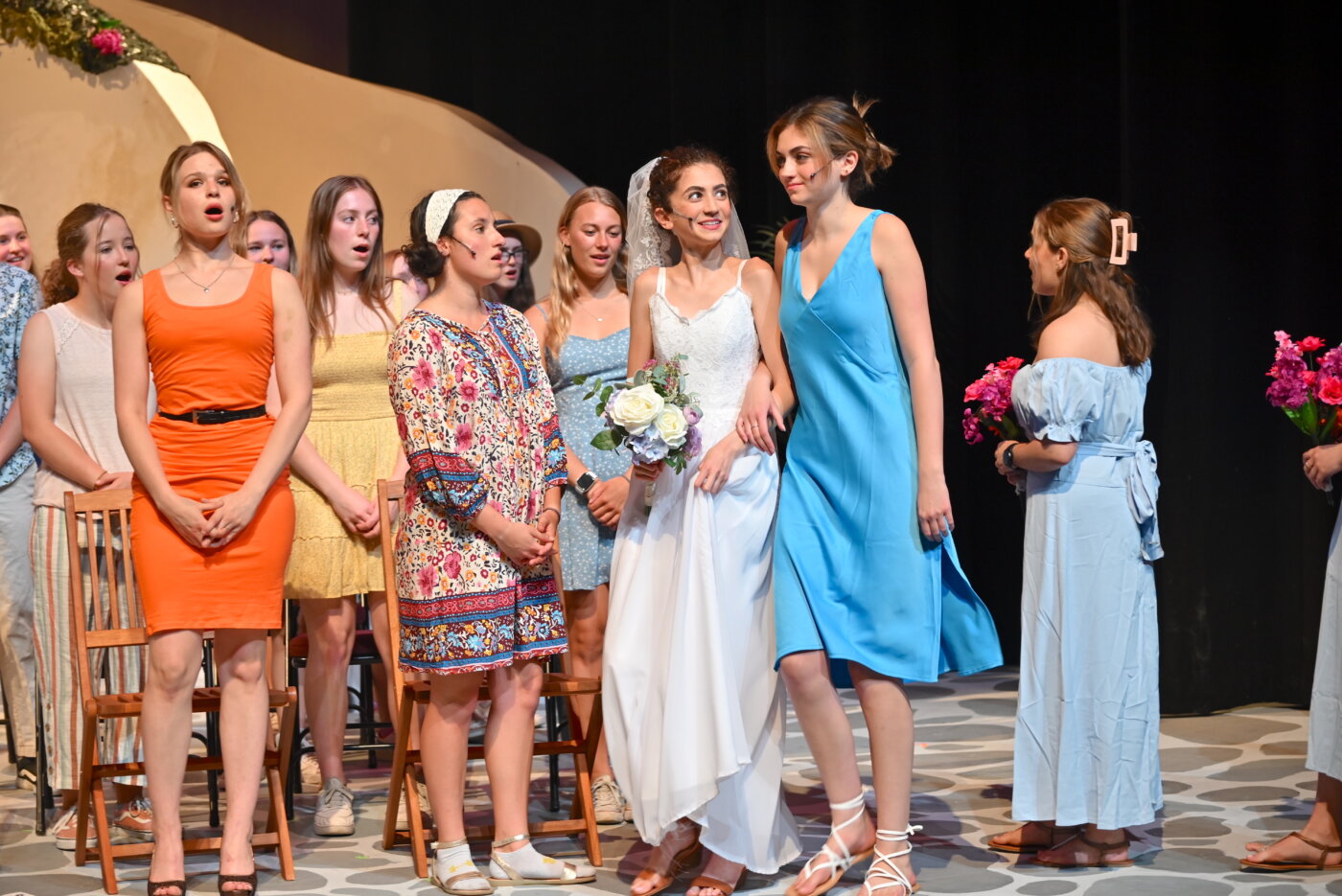
“It’s been so amazing to play the roles that we kind of have at home on stage,” Rory says. “To have that with Avery before she graduates, this incredible moment in time, feels very, very, very special.”
Jokes Avery, “It may not be exactly what we have at home, but it’s still fun driving in the car and telling my sister, ‘I swear to God, I will turn this car around. Don’t you speak to your mother like that.’”
Rory continues, “We teach each other different things; we help each other out. And I think that’s really important: that we’re collaborating in a sense.”
“We’re obviously close as sisters, but so is the entire cast,” adds Avery. “They’re my best friends.”
Henry, who provides comic relief as Donna’s worldly friend, Tanya, says much the same thing. “As my last show on CA’s mainstage, Mamma Mia! obviously carries a lot of excitement with it. But there’s also sadness,” she acknowledges. “I’ve only been at CA since Ninth Grade, but I’ve become part of such a strong community with these people. I’m going to miss that so much.”
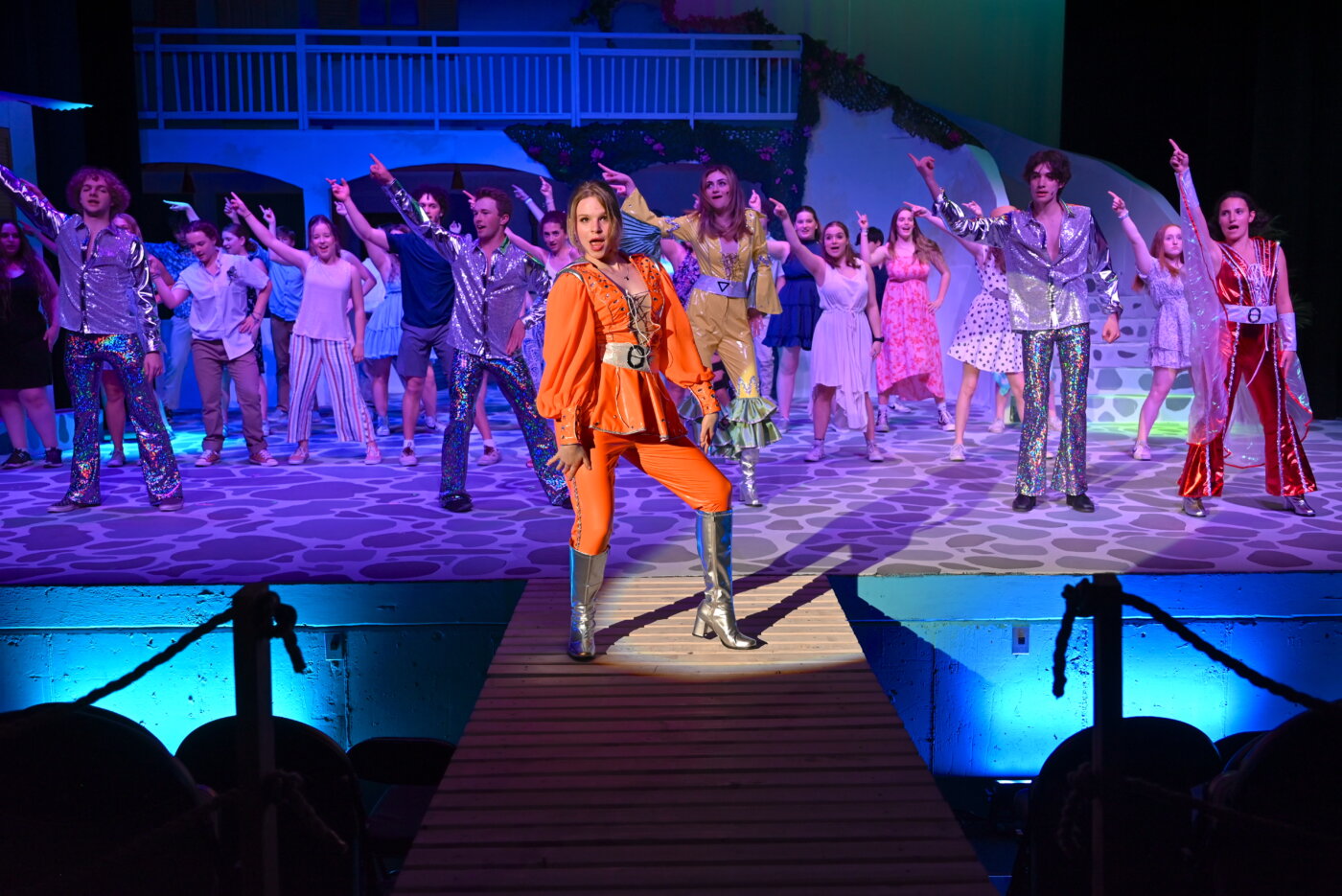
Senior performers like Goldstein and Henry have played a key role in making this production a success, according to Zaremba.
“These Twelfth Graders have been the ones to keep alive the spirit of family that we try to establish in the department,” she says. “We really owe our positivity this year to them—the way they’ve taught the younger ones how we do theater at CA and how we take care of each other. They organized a group chat for everyone on WhatsApp; they made sure the younger students had rides to and from rehearsals.” At the end of closing night, the Seniors even gave out traditional “paper plate awards” to recognize everyone’s contributions.
The music of ABBA certainly helped to nurture the positive energy. Asked whether they enjoyed learning the show’s long list of Europop hits, the two Goldsteins exclaim in unison, “We love ABBA!”
Avery goes on, “We grew up watching the movie version of Mamma Mia! Everything went over our heads at that point, but we were there for the music—and Meryl Streep.”
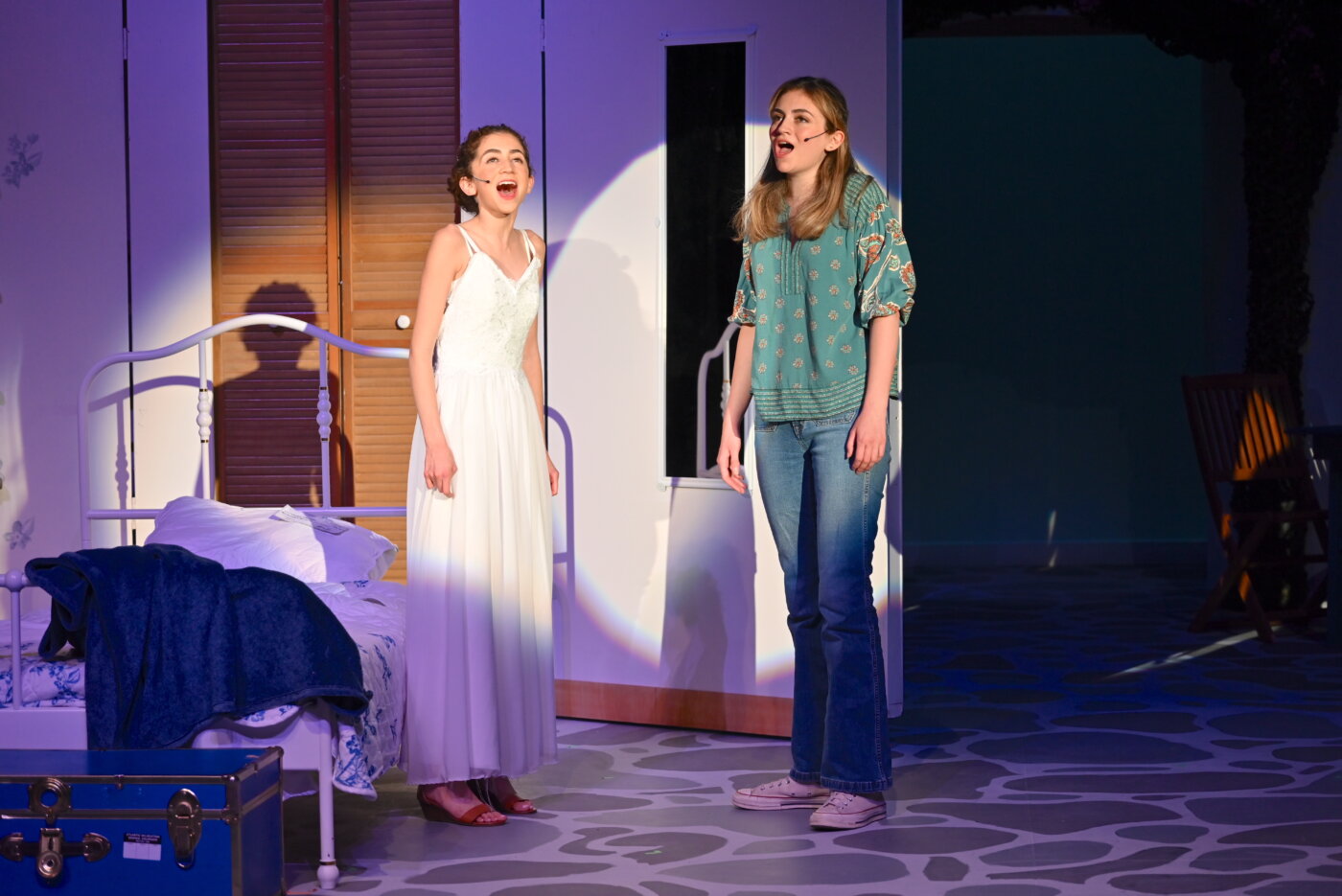
According to Senior Noah Bub, who plays one of the workers at Donna’s inn, “I had heard of ABBA before, but I didn’t really listen to them until this show, when it hit me that a lot of these songs are really, really good. They’re fun to sing; they’re fun to perform. Now I bump the soundtrack in the car all the time.”
And Ninth Grade sound tech Kit Freeman, who wrangled 24 wireless microphones to capture the performers’ singing and dialog, admits, “I get yelled at because I am always humming the music unconsciously.”
Underscores Zaremba, “I don’t know that I’ve had quite as much fun working on a show before.”
Fun takes work
“Fun” may be the word that best describes this musical, but it’s not quite right to characterize the hard work of bringing Mamma Mia! to the Leach Center’s stage. Production began in January, when Zaremba first started to envision how she could present the many song-and-dance numbers, all of which occur in and around a picturesque inn on an exotic Greek island.
An early inspiration turned into the centerpiece of the show. Zaremba wanted a Mediterranean-style boardwalk built across the orchestra pit and into the theater, a feature the likes of which she and her colleagues had never before attempted. Working with theater tech instructors James Meehan and Ian Marzonie, along with the members of the Middle and Upper School Theater Tech classes, Zaremba kept going from there, sketching out a two-story oceanside inn facade complete with a dance-worthy balcony and winding staircase.
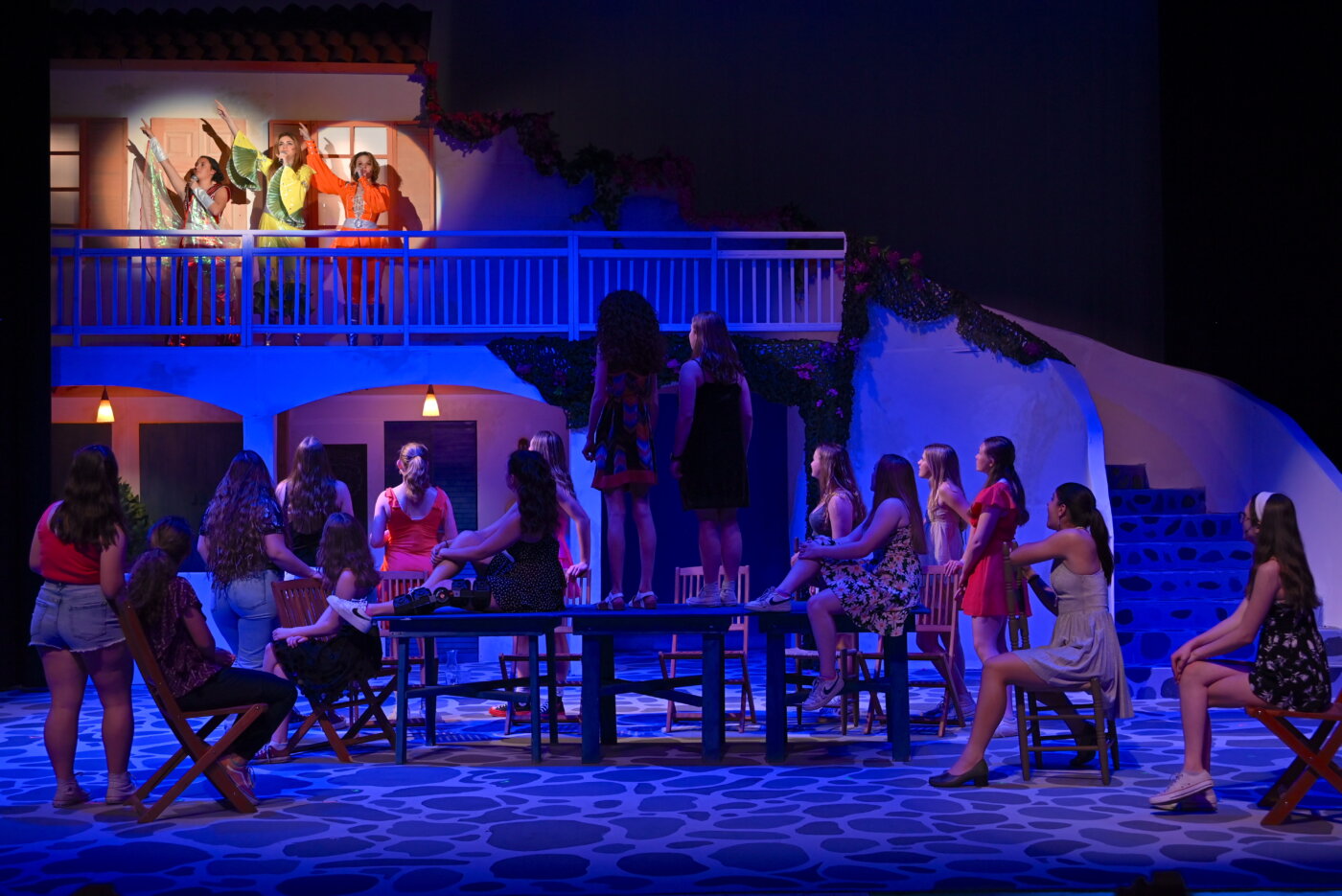
“Whenever you’re directing or choreographing a show, you’re asking yourself, ‘What do I need to be able to do?’ You think of things like entrances and exits, which the boardwalk accomplishes. You also think of where people will be singing and dancing.” For example, during the song “Super Trouper,” which Donna and her visiting friends perform in front of a crowd of wedding guests, Zaremba knew she needed an elevated stage—hence, the balcony and the staircase needed to reach it.
“For us as a team,” she says, “a big part of the process is throwing out these ideas and collaborating with each other. I need to get something done on stage, and they’re coming back with how to achieve it. At the same time, we’re thinking about what might make for a good experience for the Theater Tech students.” Meehan suggested painting the orchestra pit a Mediterranean blue to simulate the ocean, and his students covered the stage in rustic-looking painted cobblestones to approximate the look of an old seaside village.
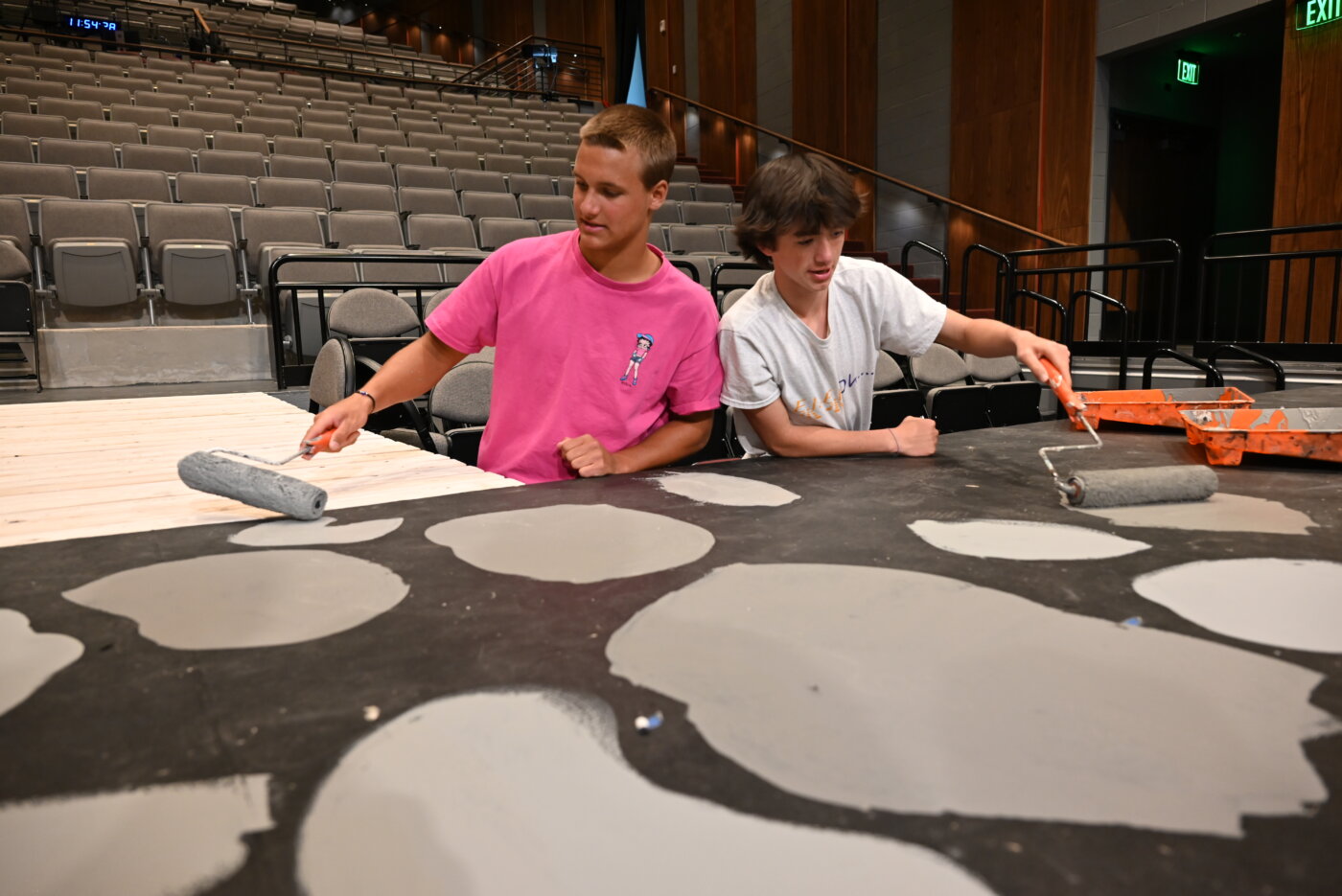
The substantial inn facade was a feat in and of itself. Meehan, the show’s set designer and technical director, led the construction of the robust, two-story set, incorporating massive structural supports that would be at home in any real residential construction project. Marzonie, for his part, guided students as they put together the custom curved staircase, working with them to carefully measure the angle needed for each unique step. The set as a whole was modeled on photos Meehan gathered through his research on Skopelos, Skiathos, and the rest of the Sporades archipelago, a quintessentially Greek setting whose villages feature flower-draped whitewashed walls and narrow, cobblestone streets that wind between shops, cafes, and dwellings.
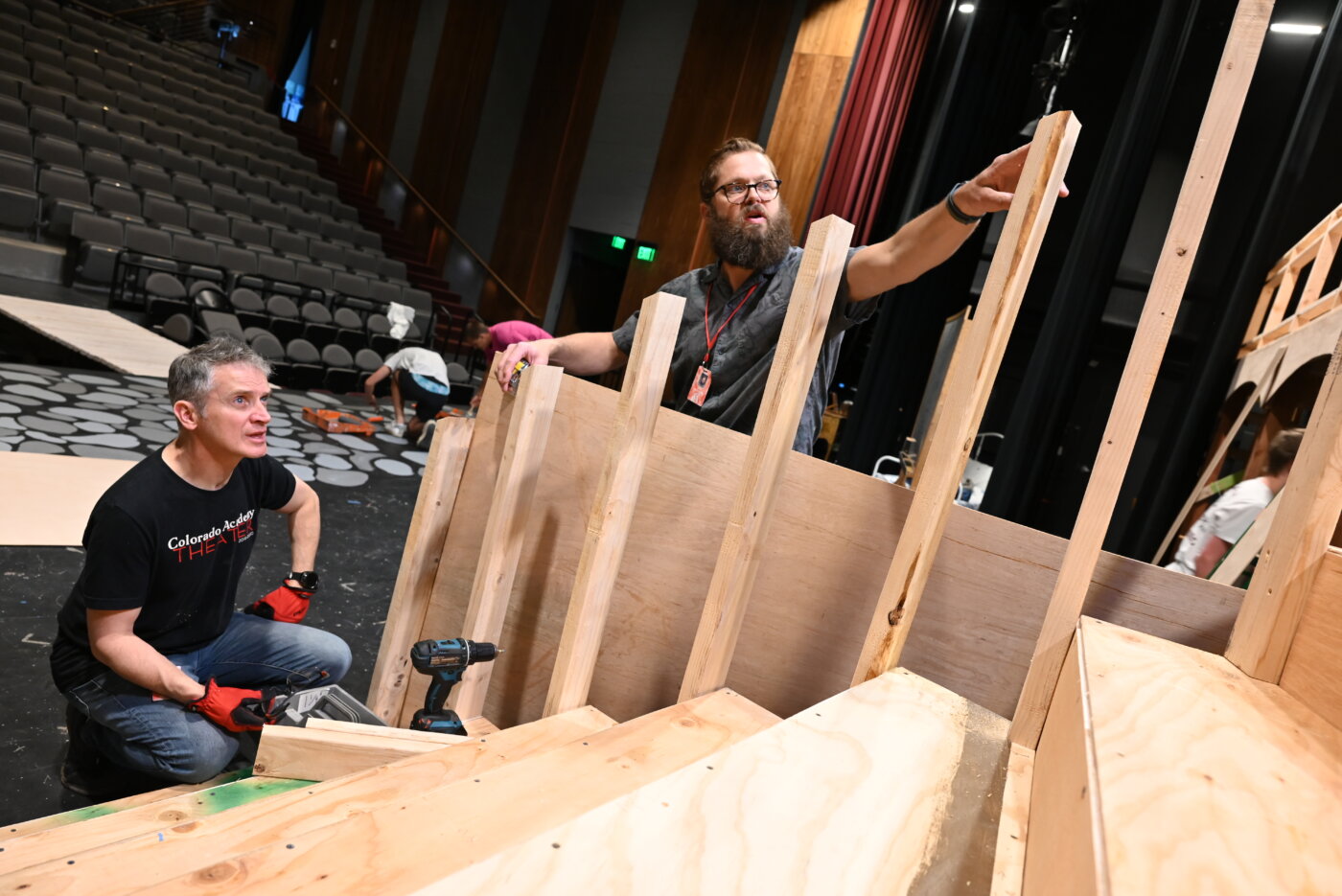
According to Zaremba, the dedicated students who put in long hours behind the scenes to construct the set, run the complex, disco-inspired lighting, and manage the orchestration of all the music and singing were essential in bringing Mamma Mia! to life. She cites the contributions of Sophomore technician Clark Akuthota, a veteran of numerous CA shows, as just one example.
Noting that Akuthota gave up countless weekend days to finish work on the musical’s set, Zaremba says, “Clark is one of those students who really pours himself into things. It’s so wonderful to have people with that genuine drive and interest in this kind of project.”
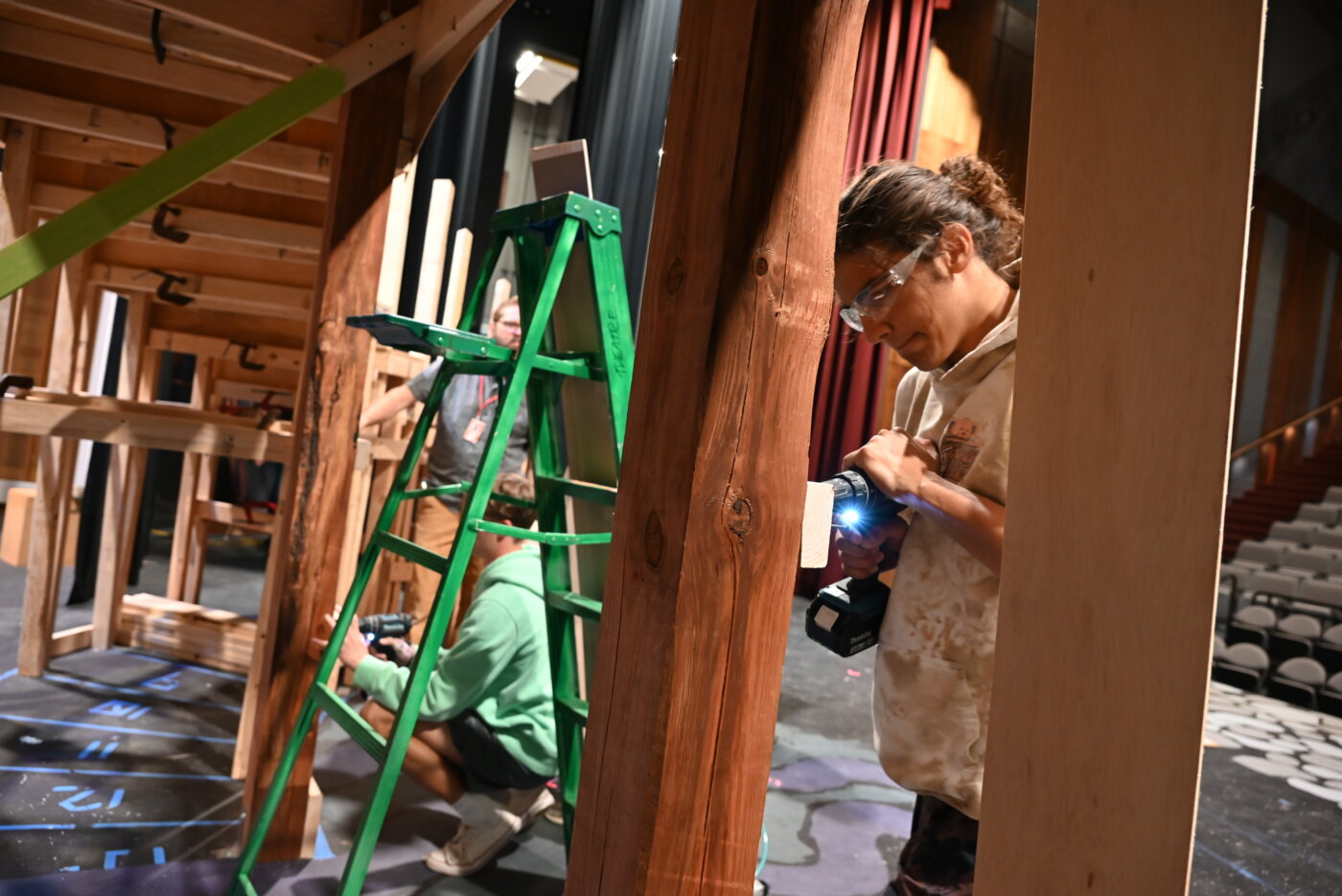
Another behind-the-scenes contributor, Junior stage manager Grant Kenney, attests, “This is one of the most ‘on-it’ shows I’ve ever been a part of at CA. It’s been really cool to be a part of it from the very beginning—from when they’re still stumbling through the blocking to the moment of the fantastic public performances. It helps that you get to listen to ABBA while you’re working.”
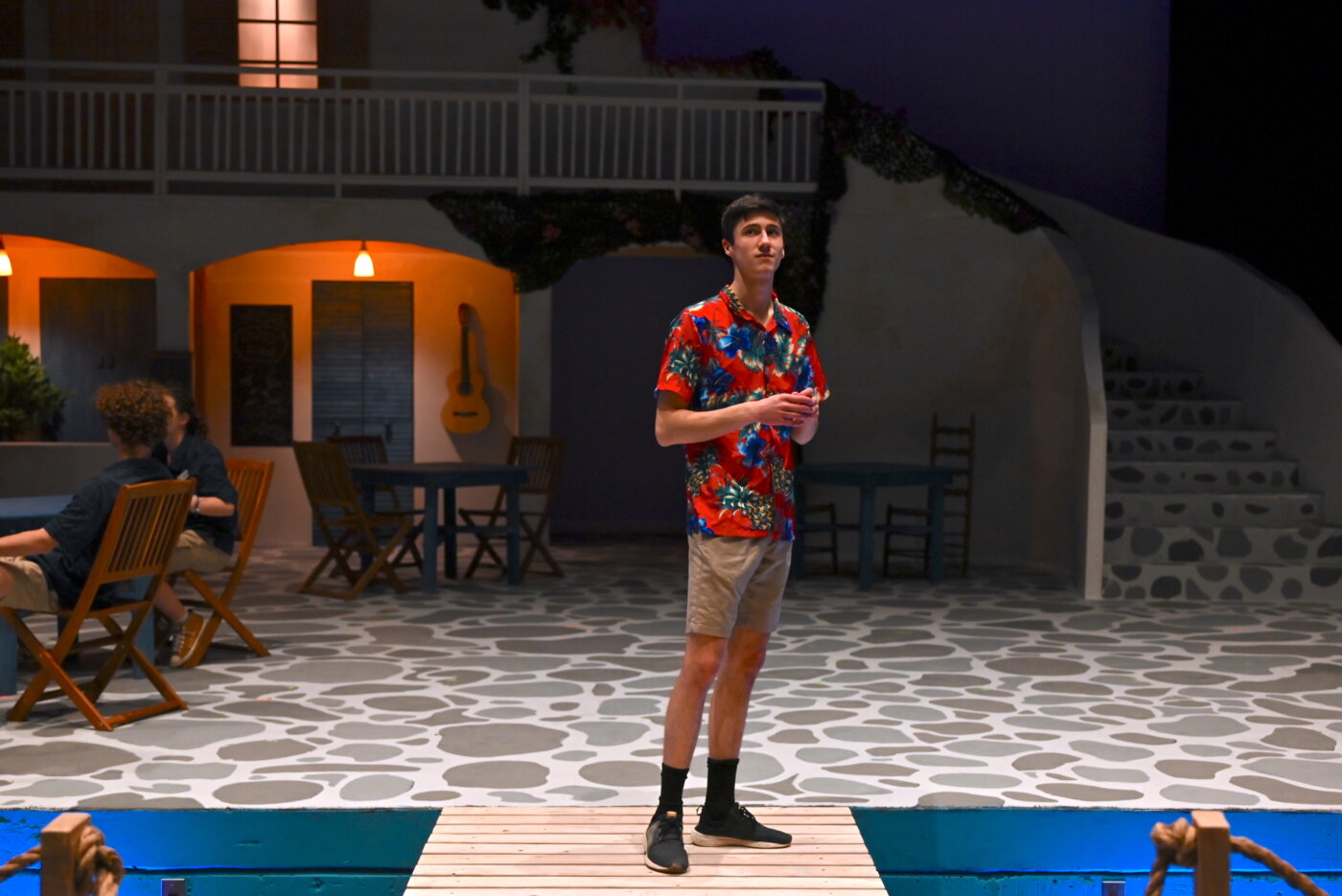
Of the party-colored, spinning lighting effects that accent Mamma Mia!’s dance numbers (including a huge mirror ball hung high above the audience), lighting board operator Kellen Martin, a Ninth Grader, explains, “It’s been a bit complicated. You have to consider how people will look on the stage under all the different lighting cues, so we’ve done a lot of fine-tuning. But it’s been really fun to do something we haven’t tried before. All the effects make the show feel more immersive for the audience.”
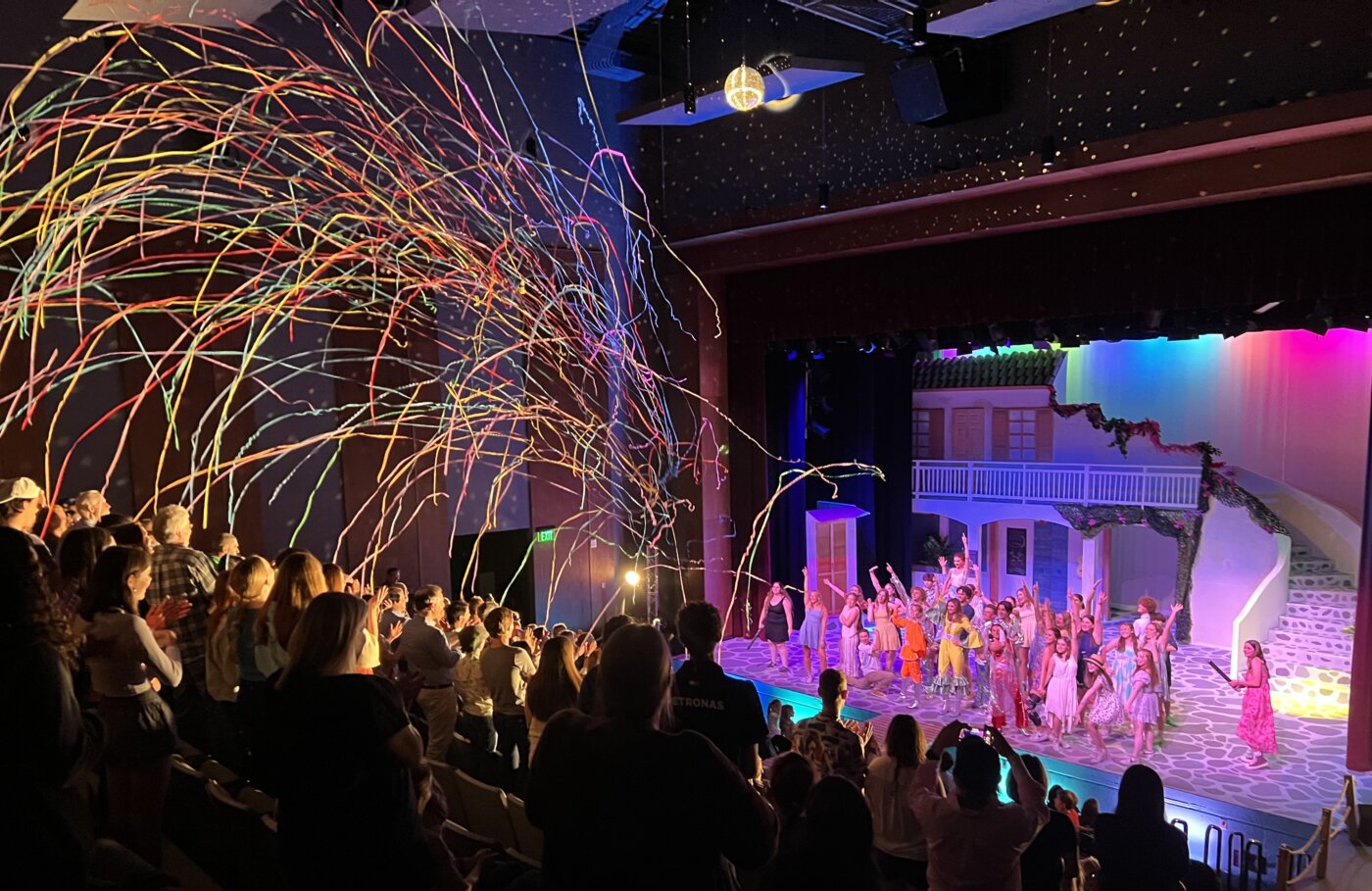

Zaremba says that having so many students participate in the production offers a real sense of ownership for the CA community. Noting that she even brought her dance students over to the theater to help with painting, she says, “Getting everyone involved in this collaboration lets everyone feel like they get to make their mark.”
Photography teacher Karen Donald’s original poster artwork for the show, Zaremba adds, is one more example of how all the arts play a role in CA’s theater productions. “We staged a photograph in Karen’s studio of Donna, Tanya, and Rosie in their disco jumpsuits, and then she added images of a disco ball, lasers, and retro colors. She hand-delivered this amazing work of art in just a few days.”
Raising the bar at CA
Zaremba has special praise for the actors who embraced the challenge of Mamma Mia!, with its demanding choreography and extensive playlist of songs. “These students have absolutely risen to the occasion,” she says.
After auditions in late January, rehearsals began in February with an all-day retreat that brought the entire cast together to walk through the songs and the script with Zaremba and CA Vocal Music Director Kevin Padworski, who coached students on how to produce the bright, pop sound that ABBA helped to pioneer.
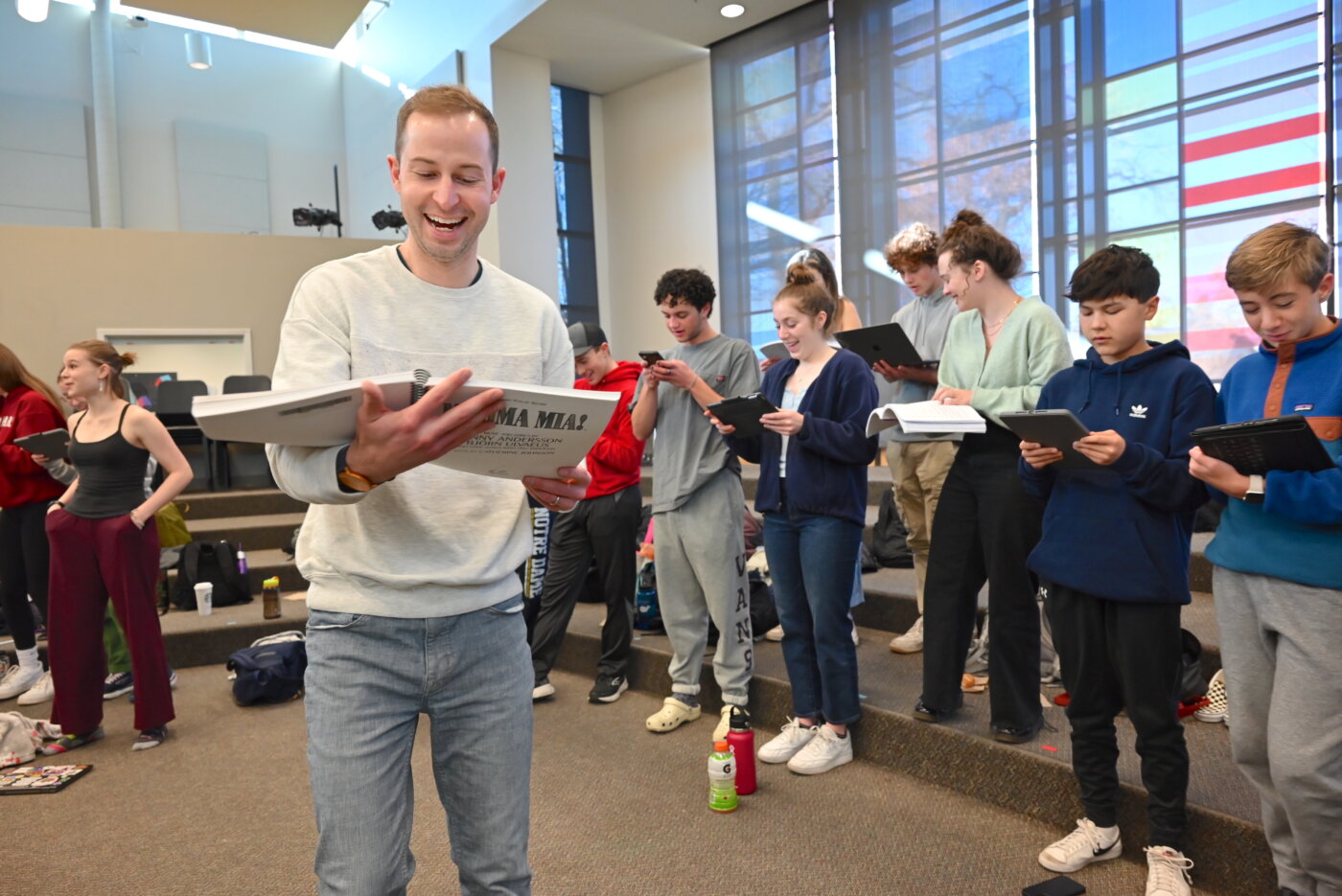
“We have some incredible vocalists,” explains Zaremba, “and the fact that there are so many songs in this piece really allows them to show off their skills in a fun way. A lot of them take private lessons with Kevin or have been training outside of the school, so this is a wonderful way for that to shine through.”
Zaremba is just as pleased with the dancing in Mamma Mia!, which, again, challenged students to master the pop styles that give the show its flair.
“Dance is newer at CA,” she says, “so to finally be at a place where we can choose a big dance show and do it well is exciting. I’ve worked hard to build CA’s dance community, and now the students I’ve had in class for several years are finally getting the chance to bring their experience to the stage.”

Notable in the choreography for Mamma Mia! is the number of elevation changes—lifts, dances on chairs and tables, and scenes on the elevated balcony—Zaremba designed into the dance sequences. Most of the students had never experienced this type of choreography before, she notes, but for Zaremba, it was one of the biggest perks of the show.
“When you have 36 students on stage, as we did, one of the challenges becomes positioning them so the audience can see everyone. By using lifts and set pieces that we could stand on, it gave us multiple levels to play with, which really added to the depth and excitement of the musical.”

That Zaremba and her students and colleagues were able to put together such a rich production speaks to the huge strides the Theater and Dance Program has made in recent years.
“Last year, Mary Poppins flew,” Zaremba notes. “And in some ways, creating the huge set and the complex dance numbers this year was even harder. We keep setting the bar higher for ourselves.”
What this upward trajectory reveals, she says, is that theater and dance at CA are truly thriving. “None of us are willing to just settle, and we know what we’re all capable of,” argues Zaremba. “We’re seeing the dividends of that approach now—those students that we’ve worked with for years, we can ask them to take on hard things, amazing things. Their talent and maturity are a luxury for all of us.”
